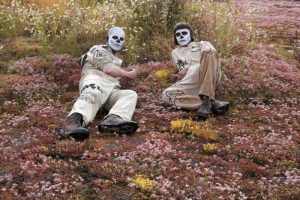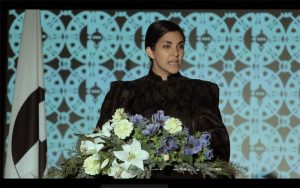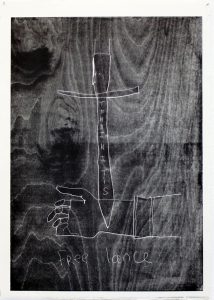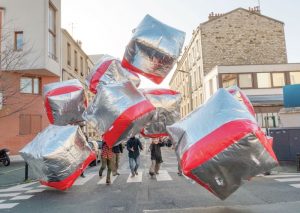Tokyo correspondent Vicente Gutierrez paid a visit to the Yokohama Museum of Art last month to check the exhibition Goth – Reality of the Departed World . Here’s what he has to say about it:
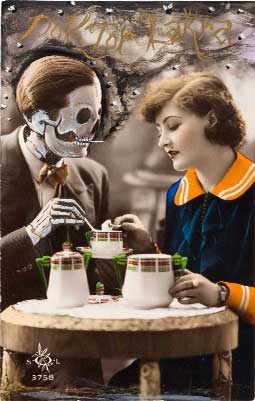 Dr. Lakra, Untitled (Muscidae and Tea), 2007. Courtesy of the Artist and Kurimanzutto, Mexico City
Dr. Lakra, Untitled (Muscidae and Tea), 2007. Courtesy of the Artist and Kurimanzutto, Mexico City
Unmistakably, Goth-culture has emerged from centuries ago back into the fore of 21st century life. While the noir-drenched subculture’s origins are rooted in the aesthetics of the “gothic” art movement which permeated Europe from the 12th to 16th centuries, Goth imagery and iconography and fashion we see today is more connected to the 19th century British revival movement which entertained a longing for medieval times.
The Goth culture of today, found in movies, music, fashion and literature, is influenced more by the revival movement and hinges on darker, yet familiar, concepts of death, darkness or night, abnormality, insanity and just about anything that is opposed to a healthy and conservatively-perceived status quo. And so, the youth, pop-culture as well as contemporary art have been infected with notions of Goth. Whether it be Marylyn Manson’s baroque stadium tours, a noir-revival in film or artists who explore death, deformation of the body or self-identity, these attempts break through the norm of the status quo.
The exhibit at the Yokohama Museum of Art featured approximately 250 works of contemporary sculpture, painting, video and photography by six internationally active artists to cite a new working definition of ‘Goth’ in a contemporary setting.
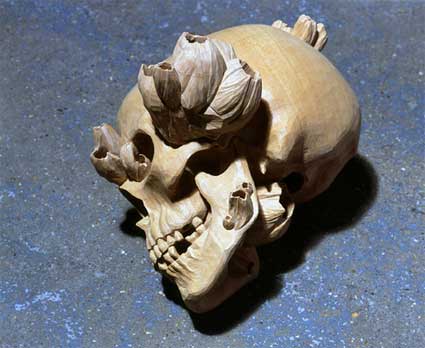 Ricky Swallow, Younger Than Yesterday, 2006
Ricky Swallow, Younger Than Yesterday, 2006
Collection of Ms.Tiqui Atencio Demirdjian
Shown in Japan for the first time, the detailed, wooden sculptures of Ricky Swallow [Australia] juxtapose vanity and death with the use of skull iconography in this work. Even though skull iconography seems to be everywhere as of late, Swallow also displayed a delicately wood carved skeleton with so much invested work that it seemed human. Each bone, while carved and pieced together delicately to replicate the raw, natural human form, echoed of [human] flaws. The composed, docile macabre posed in the center of the room, with an enigmatic chagrin. In addition to his woodcarvings, Swallow’s sculpture of a bronzed vintage boom box further expressed the artist’s concern with the flow of time, whether in cyclical or standstill. To preserve what we love despite beauty’s transience, knowing it will ultimately die, reminds us of the brevity of life and the tragically comforting adage, that nothing lasts forever.
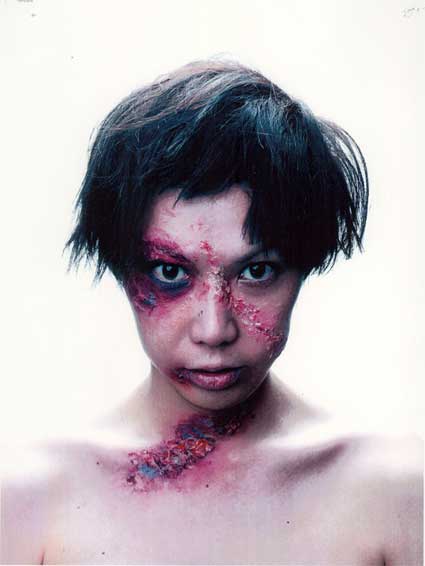 Pyuupiru, Selfportrait #02 A 12-year-old Boy Bearing Scars, 2005-07
Pyuupiru, Selfportrait #02 A 12-year-old Boy Bearing Scars, 2005-07
Spanning the wall of the exhibit space were Pyuupiru‘s collection of self-portraits which featured the artist with a variety of dramatic, mutilated poses. Appearing androgynous at times, self mutilation and modification were the tools the artist has taken to find her true self in hopes of actualizing her value as a person- psychologically and physically. With the progression of photographs, perhaps Pyuupiru is awaiting a final metamorphoses. How long? Remains a question for the viewer and artist alike. Here, the photos are said to present the process of transformation from man to woman and from a monster to a total self. The incision, modification and mutilation of her physical self seem not to deflect her bold and persistent gaze at the camera- what appears fragile on the surface is not. Rather, in exploring her self identity, her search for true-self is nihilist although a longing for a perfect love of self is detectable.
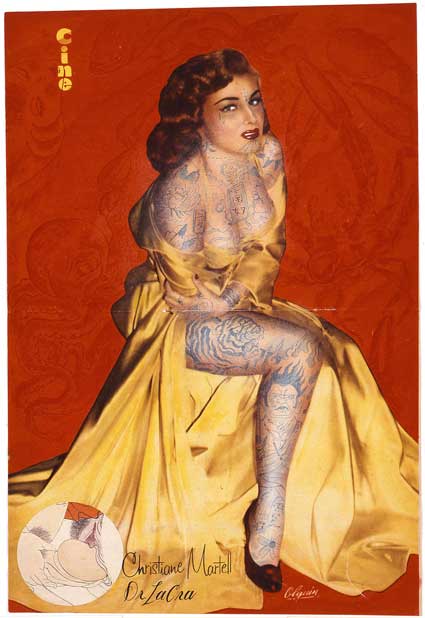 Dr. Lakra, Untitled (Love, Christiane Martell), 2007
Dr. Lakra, Untitled (Love, Christiane Martell), 2007
Courtesy of the Artist and Kurimanzutto, Mexico City
Comfortable in his technique, tattoo artist Dr. Lakra [Mexico] used vintage Mexican magazine covers (featuring pin up girls and wrestlers) as canvas for his permanent ink. While some of his exhibited works were completed during his residency at the Yokohama Museum of Art Common, Lakra’s concerns with death led him to rely on dark iconography such as demons, bats, insects, spiders and gothic patterns which are intertwined with the beautification of the very figures he draws upon. The darker image of Lakra maintains as beautiful literally overwrites original perceptions of these vintage cover models; shunning the original conventions. Lakra’s subversive obsession with kitsch beauty and death is perhaps strongly correlated to his up brining in Catholic-heavy Mexico, where such conservative ideas pervade. Continuing to mix the sacred and the secular, Lakra’s resistance to an overarching conservatism is clear.
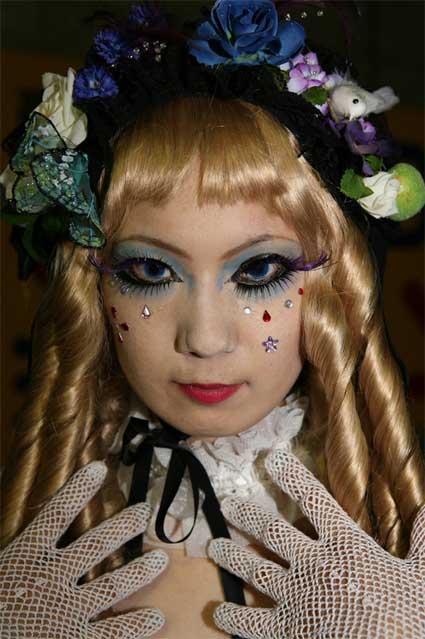 Masayuki Yoshinaga, Goth-Loli (Gothic Lolita), 2006
Masayuki Yoshinaga, Goth-Loli (Gothic Lolita), 2006
Masayuki Yoshinaga’s [Japan] massive archive of street photos of modern day Goth youth, reveal the culture’s current vitality. In this collection of photos, Goth iconography is seen translated in a variety of ways- the lolita dresses pervade, as does heavy, aesthetically-driven make up in addition to teeth actually sharpened into a set of fangs. Another stronger body modification, for the truly committed goth, were triangle slits into tongues for a vampire or serpent effect. Yoshinaga’s lens focuses on the more colorful and vibrant tangent off the Goth tradition- youth who’s obsessive concentration on their subculture suggests a darker, clouded periphery. That is, all else, i.e. values of the status quo, are meaningless. In order to capture such vanity, Yoshinaga elects subjects who wear their heart on their sleeve, no matter how dark it may be.
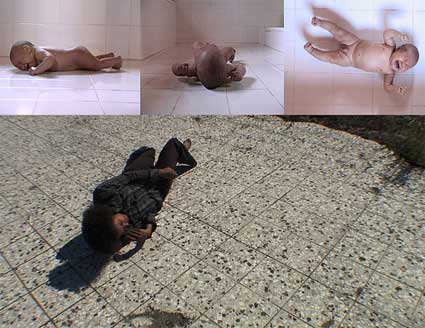 IngridMwangiRobertHutter, Performance of Doubt, 2007
IngridMwangiRobertHutter, Performance of Doubt, 2007
For this exhibition, a new video installation was created around the theme of human life, which the artists symbolized through birth, maturity and aging. One video, focused on multiple angles of an infant, simply laying on a cold, tiled floor unable to move or walk. In its peril, the infant managed roll over, all the while crying, for some kind of salavation. Is there something beautiful in this or do we file it under morbid? Concerned with conditions of human existence, IngridMwangiRobertHutter‘s videos provide introspection into moments we opt, and opt not, to remember or avoid confronting but nevertheless expected in our life span. Moreover, how do we deal with the violence, injustice and consequent endemic suffering in our world? Other projected clips focused on an older individual going through suffering, as if surviving a failed suicide attempt from a buildling as well as an elder patient anxiously awaiting in a clinical room.
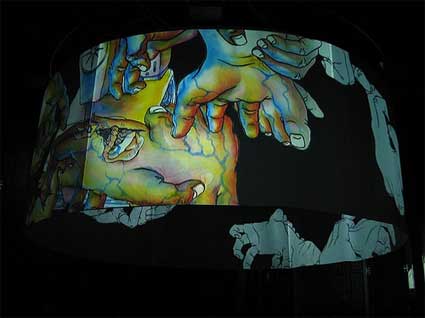 Tabaimo, Ginyo-ru(guignoller), 2005
Tabaimo, Ginyo-ru(guignoller), 2005
Courtesy of the Artist and Gallery Koyanagi. Photo: Ufer! Art Documentary
In a darker room, Tabaimo’s large format 360 degree video installation, raised to the ceiling, presented an inner imaginative world where severed hands and feet floated in an interstitial space within the circular canvas. The looped animated sequence revealed a fluid morphing and mutilation of body parts into and out of each other. More fascinating than disturbing, closer attention to the enigmatic evolution of the floating limbs, garnered Tabaimo’s individual aesthetic as an animator.
From this collection of contemporary works, Goth is clearly moving onto a wider platform. It is not only the style or the fashion, but rather a means to communicate profound ideas of life, whether those be painful or sorrowful or morbid, they are messages with the same importance and relevance of those found in pop art, or other avenues of pop culture. And on such a platform, these contemporary artists will continue their reflections on birth, death and the transformations that come in between.
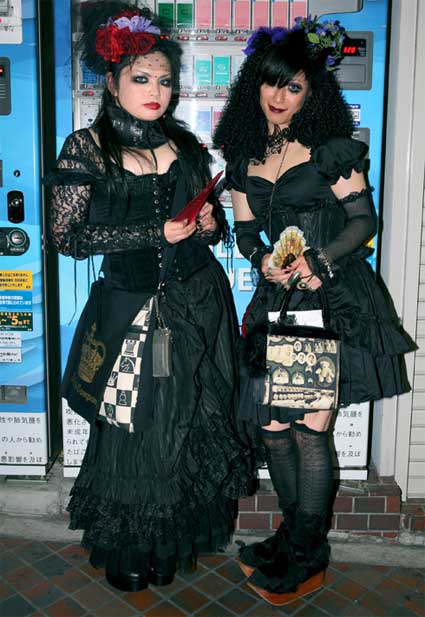 Masayuki Yoshinaga (more images)
Masayuki Yoshinaga (more images)

